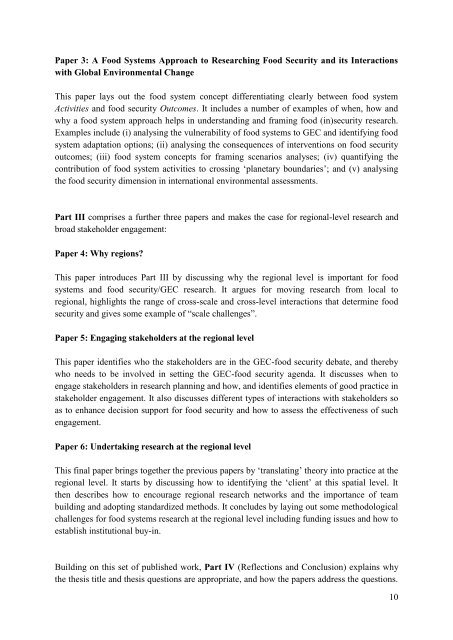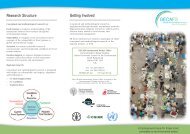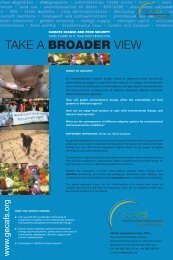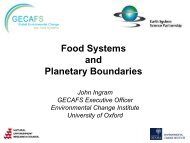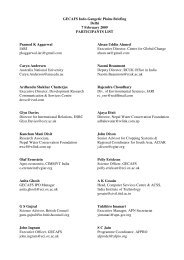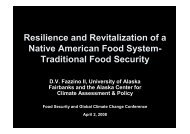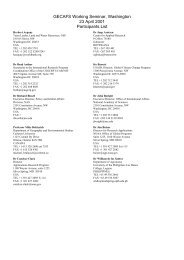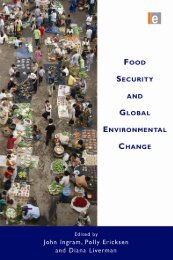From Food Production to Food Security - Global Environmental ...
From Food Production to Food Security - Global Environmental ...
From Food Production to Food Security - Global Environmental ...
- No tags were found...
You also want an ePaper? Increase the reach of your titles
YUMPU automatically turns print PDFs into web optimized ePapers that Google loves.
Paper 3: A <strong>Food</strong> Systems Approach <strong>to</strong> Researching <strong>Food</strong> <strong>Security</strong> and its Interactionswith <strong>Global</strong> <strong>Environmental</strong> ChangeThis paper lays out the food system concept differentiating clearly between food systemActivities and food security Outcomes. It includes a number of examples of when, how andwhy a food system approach helps in understanding and framing food (in)security research.Examples include (i) analysing the vulnerability of food systems <strong>to</strong> GEC and identifying foodsystem adaptation options; (ii) analysing the consequences of interventions on food securityoutcomes; (iii) food system concepts for framing scenarios analyses; (iv) quantifying thecontribution of food system activities <strong>to</strong> crossing ‘planetary boundaries’; and (v) analysingthe food security dimension in international environmental assessments.Part III comprises a further three papers and makes the case for regional-level research andbroad stakeholder engagement:Paper 4: Why regions?This paper introduces Part III by discussing why the regional level is important for foodsystems and food security/GEC research. It argues for moving research from local <strong>to</strong>regional, highlights the range of cross-scale and cross-level interactions that determine foodsecurity and gives some example of “scale challenges”.Paper 5: Engaging stakeholders at the regional levelThis paper identifies who the stakeholders are in the GEC-food security debate, and therebywho needs <strong>to</strong> be involved in setting the GEC-food security agenda. It discusses when <strong>to</strong>engage stakeholders in research planning and how, and identifies elements of good practice instakeholder engagement. It also discusses different types of interactions with stakeholders soas <strong>to</strong> enhance decision support for food security and how <strong>to</strong> assess the effectiveness of suchengagement.Paper 6: Undertaking research at the regional levelThis final paper brings <strong>to</strong>gether the previous papers by ‘translating’ theory in<strong>to</strong> practice at theregional level. It starts by discussing how <strong>to</strong> identifying the ‘client’ at this spatial level. Itthen describes how <strong>to</strong> encourage regional research networks and the importance of teambuilding and adopting standardized methods. It concludes by laying out some methodologicalchallenges for food systems research at the regional level including funding issues and how <strong>to</strong>establish institutional buy-in.Building on this set of published work, Part IV (Reflections and Conclusion) explains whythe thesis title and thesis questions are appropriate, and how the papers address the questions.10


